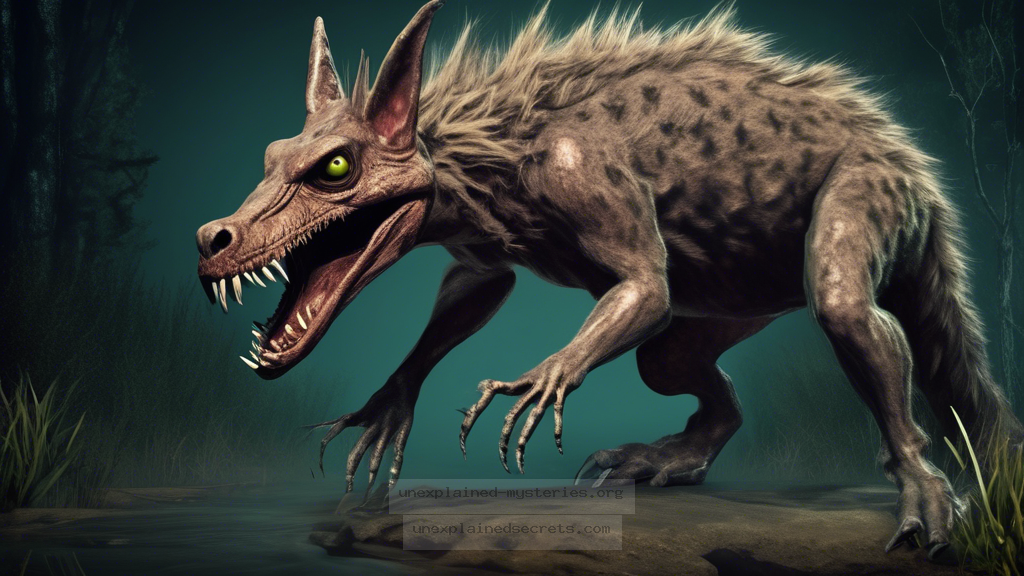Is the Chupacabra a Myth or a Real Creature Uncovered by Cryptozoologists?
Is the Chupacabra a Myth or a Real Creature Uncovered by Cryptozoologists?
The Chupacabra—an elusive creature that has inspired fear and fascination since its first reported sightings in the 1990s—raises a compelling question in the field of cryptozoology: Is it a myth, or is there real evidence to support its existence? This question matters not just to cryptozoologists, but also to those interested in the intersections of folklore, science, and the unexplained. To understand the Chupacabra, we must delve into its origins, the various sightings reported, the scientific investigations conducted, and the cultural impact it has had over the years.
Historical Context: The Emergence of the Chupacabra
The Chupacabra, which translates to “goat-sucker” in Spanish, first came to public attention in Puerto Rico in the mid-1990s. Farmers began reporting that livestock, particularly goats, were being found dead with their blood drained. The initial report by Madelyne Tolentino in 1995 described a creature unlike anything seen before: a reptilian being with spines along its back and glowing eyes, resembling a cross between a dog and a lizard. This narrative quickly spread across Latin America and even into the United States, sparking a frenzy of sightings and claims.
What makes the Chupacabra particularly interesting is its evolution as a cultural phenomenon. While early reports emphasized a monstrous creature, subsequent sightings varied widely, describing everything from hairless canines to humanoid figures. This evolution in description may indicate how folklore adapts to societal fears and expectations. The Chupacabra serves as a reflection of cultural anxieties regarding genetic engineering, environmental degradation, and societal collapse.
Core Concepts: Characteristics of the Chupacabra
The Chupacabra is typically described with several defining characteristics that have emerged from eyewitness accounts:
- Size: Most reports describe the creature as standing approximately 3 to 4 feet tall.
- Appearance: It is often depicted as having spines or quills along its back, sharp fangs, and glowing red or green eyes.
- Habitat: Initially reported in rural areas, Chupacabra sightings have expanded to suburban locales.
- Behavior: The creature is said to be nocturnal, preying primarily on livestock, particularly goats.
This inconsistent yet vivid depiction has fueled both skepticism and belief. The Chupacabra has become an archetype of the modern cryptid—part urban legend, part unexplained phenomenon.
Practical Implications: Scientific Investigations into the Chupacabra
Despite numerous reports, the scientific community has approached the Chupacabra phenomenon with a combination of skepticism and curiosity. In 2004, a Texas biologist, Dr. John A. McGowan, conducted an investigation into a supposed Chupacabra carcass. The specimen turned out to be a raccoon afflicted with mange, a condition that results in hair loss and a gaunt appearance. This case highlights a common explanation for many Chupacabra sightings: misidentified animals.
Furthermore, a study conducted in 2016 by a group of researchers from the University of Texas attempted to analyze the genetic material of Chupacabra-like creatures. Their findings indicated that many reported sightings could be attributed to canids suffering from diseases. This revelation raises the question: Are these supposed sightings merely misidentifications of sick animals?
Alternative Perspectives: Folklore vs. Reality
Critics often argue that the Chupacabra is a product of cultural folklore rather than an actual cryptid. They suggest that the tales surrounding the creature are manifestations of collective fears or societal issues, such as the agricultural crises faced by farmers. This perspective posits that the Chupacabra is not an entity to be discovered but rather a narrative that reflects the anxieties of a community.
Conversely, some enthusiasts maintain that the Chupacabra represents a legitimate biological anomaly that remains to be discovered. They argue that just because the creature has not yet been scientifically validated does not mean it does not exist. This debate between folklore and reality continues to shape the discourse within cryptozoology, posing significant questions about the nature of evidence and belief.
Common Misconceptions and Clarifications
Many people assume that all Chupacabra sightings refer to the same creature. In reality, reports vary significantly, suggesting that multiple animals may be misidentified as Chupacabras.
While many accounts emphasize blood-draining, not all Chupacabra sightings include this behavior. Some descriptions focus on different physical traits and behaviors.
Understanding these misconceptions is essential for a clearer perspective on cryptid discussions. The Chupacabra serves as an example of how myths can evolve and shape perceptions of the unknown.
Best Practices for Investigating Cryptids
For those interested in investigating the Chupacabra or similar cryptids, several best practices can enhance the rigor and reliability of the inquiry:
- Document Sightings: Keep detailed records of eyewitness accounts, including dates, locations, and physical descriptions.
- Utilize Technology: Employ cameras, audio recorders, and drones to capture evidence of suspected sightings.
- Engage with Experts: Collaborate with biologists, wildlife experts, and folklorists to gain a well-rounded understanding of reported phenomena.
- Maintain Skepticism: Approach investigations with a critical mindset. Be open to the possibility of misidentification while remaining curious.
These practices can help establish a more scientific approach to cryptozoology, moving beyond anecdotal evidence to a more systematic exploration of unexplained creatures.
Future Developments: Ongoing Research and Interest
As interest in cryptids continues to rise, so too does the potential for future research. New technologies, such as environmental DNA (eDNA) sampling, offer exciting avenues for investigating elusive creatures like the Chupacabra. These methods allow researchers to analyze genetic material from soil and water samples, potentially identifying unknown species in the process.
The cultural footprint of the Chupacabra also persists, with documentaries, podcasts, and social media fueling ongoing discussions and investigations. Engaging with communities that have experienced Chupacabra sightings may provide further insights and encourage a collaborative approach to understanding the phenomenon.
Conclusion: The Chupacabra as a Cultural and Cryptozoological Enigma
The Chupacabra remains a compelling figure in the realm of cryptozoology, embodying the intersection of folklore, fear, and the unknown. While scientific investigations often point to misidentifications of common animals, the enduring nature of Chupacabra sightings highlights the complexities of belief and narrative. As we continue to explore this enigma, we must balance skepticism with curiosity, ensuring that our investigations remain grounded in both scientific inquiry and cultural understanding. Whether the Chupacabra is a myth or a real creature awaiting discovery, it undoubtedly serves as a fascinating reflection of humanity’s quest to understand the mysterious world around us.
Other Articles
Recent Posts
- What Happened to Flight MH370? The Conspiracy Theories That Still Haunt Us
- What Secrets Lurk Within the Walls of the Infamous Trans-Allegheny Lunatic Asylum?
- What Evidence Supports the Existence of Bigfoot in the Pacific Northwest?
- What Happened to the Indus Valley Civilization? Unraveling the Mysteries of Ancient Urban Life
- Can Telepathy Be Scientifically Proven Through Laboratory Evidence?







